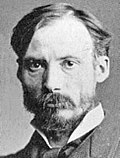Fichier:La Grenouillère (Auguste Renoir) - Nationalmuseum - 19486.tif

Taille de cet aperçu JPG pour ce fichier TIF : 744 × 600 pixels. Autres résolutions : 298 × 240 pixels | 595 × 480 pixels | 952 × 768 pixels | 1 270 × 1 024 pixels | 2 540 × 2 048 pixels | 3 234 × 2 608 pixels.
Fichier d’origine (3 234 × 2 608 pixels, taille du fichier : 24,16 Mio, type MIME : image/tiff)
Historique du fichier
Cliquer sur une date et heure pour voir le fichier tel qu'il était à ce moment-là.
| Date et heure | Vignette | Dimensions | Utilisateur | Commentaire | |
|---|---|---|---|---|---|
| actuel | 8 octobre 2016 à 13:03 |  | 3 234 × 2 608 (24,16 Mio) | AndreCostaWMSE-bot | {{Artwork |other_fields_1 = |artist = {{Creator:Pierre-Auguste Renoir}} |title = {{en|La Grenouillère}} {{sv|La Grenouillère}} |wikidata = Q10908882 |object_type = painting |description... |
| 8 octobre 2016 à 13:03 |  | 3 234 × 2 608 (24,16 Mio) | AndreCostaWMSE-bot | {{Artwork |other_fields_1 = |artist = {{Creator:Pierre-Auguste Renoir}} |title = {{en|La Grenouillère}} {{sv|La Grenouillère}} |wikidata = Q10908882 |object_type = painting |description... |
Utilisation du fichier
Les 2 pages suivantes utilisent ce fichier :
Usage global du fichier
Les autres wikis suivants utilisent ce fichier :
- Utilisation sur ar.wikipedia.org
- Utilisation sur en.wikipedia.org
- Utilisation sur en.wikiquote.org
- Utilisation sur es.wikipedia.org
- Utilisation sur hy.wikipedia.org
- Utilisation sur hyw.wikipedia.org
- Utilisation sur ja.wikipedia.org
- Utilisation sur ru.wikipedia.org
- Utilisation sur sv.wikipedia.org
- Utilisation sur tr.wikipedia.org
- Utilisation sur uk.wikipedia.org
- Utilisation sur www.wikidata.org
- Q10908882
- Wikidata:WikiProject sum of all paintings/Creator/Pierre-Auguste Renoir
- Wikidata:WikiProject sum of all paintings/Subject/Paris
- User:Kringln/Sitelink report
- Wikidata:WikiProject sum of all paintings/Old European art missing genre/Sweden
- Wikidata:WikiProject sum of all paintings/Collection/Nationalmuseum/19th Century





